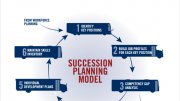
The ‘Family Glitch’ is back in health policy news with an updated estimate of the cost to fix it from researchers at the Urban Institute. This latest research, published in the July issue of Health Affairs, concludes that fixing the family glitch reduces family health spending but increases government costs. No surprise there; fixing the glitch means providing premium tax subsidies to families who are currently locked out of the Marketplace. Reading beyond the headlines, however, we see other benefits—namely greater economic security for low-income families and increased Marketplace stability—in addressing this flaw in ACA implementation that unfairly disadvantages low-income families.
Let’s start with a refresher of what the family glitch is. As I explained in this, eligibility to receive financial assistance to purchase coverage in the health insurance marketplaces is not solely determined by income. It is also subject to whether a family has access to affordable employer-sponsored insurance (ESI). The problem is that the definition of “affordable”—for both an individual employee and a family—is based on the cost of individual-only coverage and does not take into consideration the often significantly higher cost of a family plan. This is particularly problematic for low-income families, who pay a much higher share of their income to purchase ESI coverage than higher-income families.
The study estimates the impact on Marketplace enrollment and government spending under two scenarios. Both scenarios change the affordability measure for family coverage but the first scenario allows all members of the household to receive tax credits while the second scenario limits financial assistance to the dependents of the worker. What’s different about this analysis is that it factors in offers and costs of employee-plus-one coverage. Previous studies have examined offers of family coverage, which is costlier, so as a result, this study estimates fewer people enrolling with premium tax credits and lower government cost to fix the glitch. Changing the affordability test would provide benefits to both families and the marketplaces.
Strengthening Economic Security
Changing the affordability test would provide equitable access to premium tax subsidies for low-income families and strengthen their economic security.
The Urban study indicates that poor and near-poor families, who are impacted by the family glitch, would see a significant decrease in premium cost for Marketplace coverage compared to employer-sponsored insurance (ESI).
For example, families with income less than 138 percent of poverty (about $33, 000 for a family of four) would pay only 2.1 or 5.5 percent of income (depending on the scenario) for Marketplace coverage compared to 20.1 percent of income for the average cost of ESI. The analysis accounts for the tax savings associated with the employee’s share of ESI premiums, which are generally deducted on a pre-tax basis and thereby lower the out-of-pocket premium cost.
Unfortunately, given the wide variability in out-of-pocket cost-sharing for services in ESI, the Urban study does not quantify the impact on overall health care spending for low-income families. Importantly, Marketplace enrollees with income up to two and half times the poverty level get additional assistance with cost-sharing, with more substantial reductions offered to families with income below 200 percent of poverty. So it’s fair to say that the impact on family health care spending will be even greater than reflected in the Urban analysis. With a smaller chunk of their paychecks devoted to health care, low-income families would be better able to meet their basic needs, buy a car or a home, save for college or retirement, and avoid medical debt; all of which contribute to a stronger economy and more economically stable families.
Improving the Marketplace Risk Pool
Changing the affordability test would increase Marketplace stability by strengthening the risk pool. There’s no doubt that the ACA has had a dramatic impact on uninsured rates. More than, and the uninsured rate among individuals under the age of 65 has dropped to .
Source: healthaffairs.org
Related posts:























